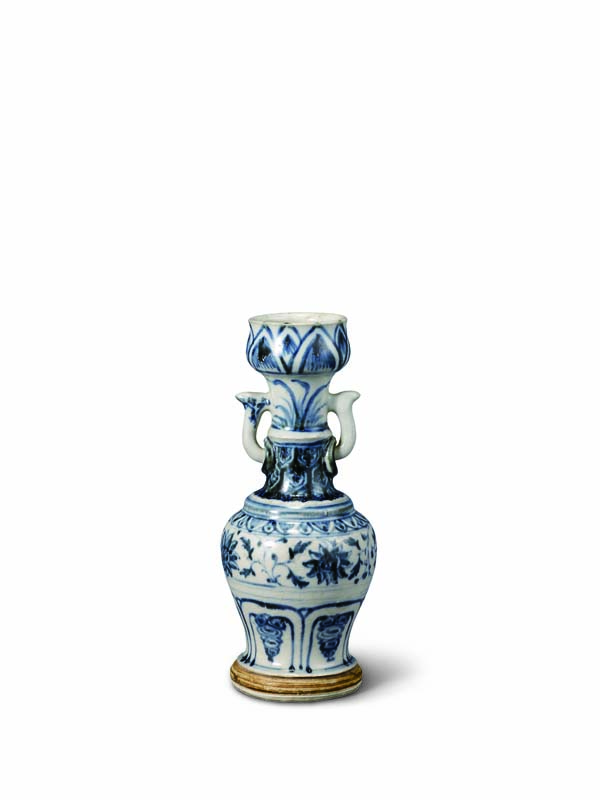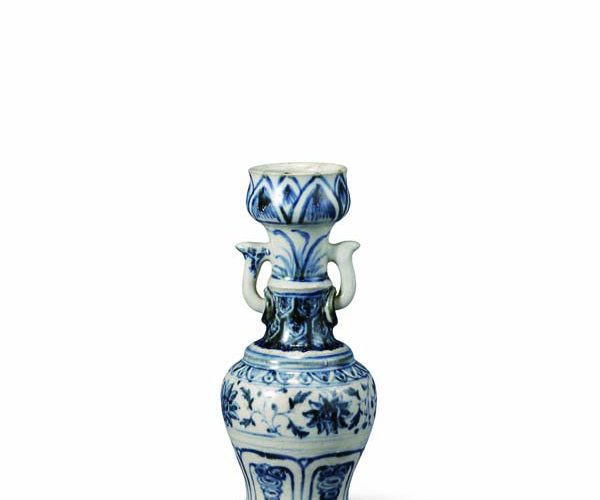(No.1, Vol.9,Feb-Mar 2019 Vietnam Heritage Magazine)
Lamp stand
Ceramic,15th century
found at Cu Lao Cham

Vase
Ceramic. 15th century
found at Cu Lao Cham

Ceramic, 15th century
used by sailors on the ancient wreck
found at Cu Lao Cham

Teapot “Tr?c th??ng thanh vân”
Ceramic,18th century. China
a buffalo boy is throwing his hat to the sky, the scene suggests the belief that becoming a high posision person means the way to the heaven.
Found at Ca Mau
%201-koo002843-000-06%20copy.jpg)
Ceramic,17th century. China
found at Hon Cau

Ceramic,16-17th century. China
found at Binh Thuan

Water container
Ceramic, 15th century
found at Cu Lao Cham

Ang
Ceramic, 15th century
found at Cu Lao Cham

Vase for lotus
Ceramic 15th century
found at Cu Lao Cham
The opening of the exhibition titled “Ocean’s secrets from ancient wrecks” was held at the National Museum of History no. 1 Trang Tien Street, Hanoi on January 18, 2019
In an area of about 600m2, the exhibition “Ocean’s secrets from ancient wrecks” introduces to the public about 500 works dated from the 13th to the 18th centuries, selected from the Museum’s treasure trove of Vietnamese, Thai and Chinese ceramic and porcelain relics, belonging to 4 main topics: Vietnamese maritime trade; Vietnamese commercial ceramics; Maritime Silk Road; and Wrecks excavated from Vietnamese sea bed.
These antique relics have been exhibited under the title “Ceramics and china found in Vietnam Seas” by the National Museum of History together with the National Research Institute of Maritime Cultural Heritage of Korea in Mokpo and Busan from Nov. 2017 to Apr. 2018, and have been met by the Korean research community and public with keen interest.
These relics, which were goods carried by ancient merchant ships and found on the floor of the Eastern Sea of Vietnam, prove the important role of Vietnam in international trade in the golden age of the maritime Silk Road. Moreover, with the ceramic production center of Chu Dau, Vietnam actively participated in producing, importing and exporting goods with many countries in the world during the 15th-16th centuries. Some restored items of the Chu Dau Ceramic Joint Stock Company are also featured at the exhibition to promote the restoration and development of a unique traditional strain of ceramics of Vietnam.
Remarkably, this is the first time the National Museum of History has introduceds the public to the fullest, most extensive amount of ceramic and china artifacts recovered from the wrecks found in Binh Chau, Binh Thuan, Hon Zam, Cu Lao Cham, Hon Cau and Ca Mau – the six ancient ships that the National Museum of History took part in excavating. The excavation of these ships have brought the museum invaluable artifacts and documents, a new perception of the science of archeology and have proven the importance and strategic position of Vietnamese seas in international trade.
In his opening speech, Dr. Nguyen Van Cuong emphasized, “Organizing this exhibition we defined its significance and content in such a way best fitted to promote the history, the country and the people of Vietnam. It should be stressed that Vietnam is a seafaring nation that has been present very early on the biggest trade routes of the world. The selected artifacts should present the process of formation and development of the maritime trade routes in which Vietnam played an active role. At the same time, we want to highlight the political aspects of Vietnam defending its sovereignty regarding the Paracel and Spratly Islands which have always been operated and ruled by Vietnam.”
This exhibition will provide the domestic and international public with more facts on the history of foreign trade of Vietnam in conjunction with its maritime sovereignty and the maritime Silk Road. The exhibition will be open for 4 months (Jan. 18 to May 18, 2019.)
On this occasion the National Museum of History has arranged the reception of the original artifacts, photos and documents related to the Paris Peace Accord from former Vice President Ms. Nguyen Thi Binh; and of two Peugeot bicycles from Mr. Dao Xuan Tinh, owner of the record collection of Peogeot bicycles produced in the Republic of France, donated to the Museum.
National Museum of History
No. 1 Trang Tien Street, Hanoi

